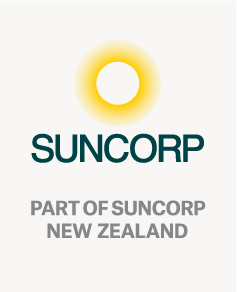Severe rain and weather: If you are a Vero customer and need to claim, fill out our online claims form Claims | Vero or contact your broker.
Back Back to homepage
FAQs:
Dealing with damage clean up
Before entering the property, you should make sure it is safe to do so.
If water has entered the home or business, power should be turned off at the mains, with an electrician checking the power supply before it is turned back on.
We recommend wearing protective clothing such as gloves, a mask, safety glasses and gumboots.
A detailed list should be taken of damaged items, with plenty of photos before and after the clean-up process to help with the assessment.
FAQs:
Flood water and mud/silt that enters property from the ground up, as opposed to through the roof or an internal overflowing water system, is likely to be contaminated water. Due to the contamination soft furnishings will be difficult to save. For those that can, moving carpets and other waterlogged soft furnishings outside of the home will help to dry out the property. We can arrange disposal of these items as part of the claim. For other affected items that can potentially be restored with cleaning and appropriate servicing, such has metal furniture, pots and pans or plastic items like buckets and storage boxes, storing these somewhere safe and where there is protection from further damage is preferred if possible.
Vehicles that have been submerged should not be driven. We can have them towed to our storage area for assessment. If the vehicle needs to be moved out of the way urgently, it should be moved to the nearest safe spot and we can take it from there. And don’t forget to remove contents from the vehicle, if safe to do so.
If you have access to the right tradespeople, urgent repairs to make the property safe and to help avoid any further loss or damage are permitted. You should take plenty of photos and obtain a detailed invoice for the work that is done. The work done should be the minimum amount needed to prevent further loss or damage. Any land related damage should be referred to us in the first instance.
We can help manage silt and landslip damaged land and/or homes in some cases.
You may be entitled to a cash settlement from Toka Tū Ake EQC and we know that many customers have the skills or contacts to move ahead with their own repairs and clean up. For those, a cash settlement is the best option.
However, we know that some customers need help. If you need silt removed from your property, we’re happy to work with you to provide some help or advice on what we can do. In most cases, we can organise for the silt to be removed. Please note that this would mean that you would not receive a cash settlement directly from Toka Tū Ake EQC and you would be agreeing that EQCover payment could be paid directly to the repairer when the works are completed. There may also be some works needed outside the scope of the EQCover and/or their insurance cover. Any such additional works would need to be agreed and paid for by yourself.
If you have landslip damage to your land and/or home, we won’t know the cash settlement entitlement until we get engineering advice. There will be some instances where the repairs needed are routine, and in that case we may be able to assist further with organising those repairs. Much depends on each homeowner’s situation and for that reason, we need to consider each property on a case-by-case basis.
More information can be found on the New Zealand Government Land Insurance: Toka Tū Ake EQC page or the EQC Fact Sheet (PDF).
Having windows, doors and skylights open as much as possible to increase ventilation throughout the home will help to prevent mould from growing. If mould begins to appear, domestic mould-specific cleaning products can be used to help remove it. Please ensure that instructions are followed, with appropriate safety gear e.g., a mask and gloves as a minimum. If there is a medical condition or additional help is required for other reasons, please contact one of our team to discuss alternatives.
Disclaimer – The information on this page is of a general nature only, intended to provide guidance about how your claim may be managed. The steps which will be taken to manage your particular claim will depend upon your individual circumstances and your policy wording. Please refer to your policy wording for full details of your insurance cover. If in doubt about what you should do, speak to your Broker or contact Vero on 0800 800 134.
